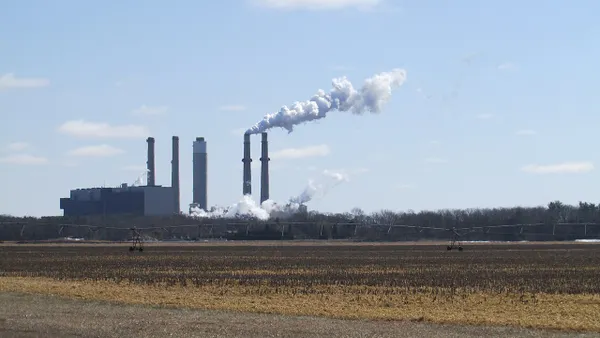Dive Brief:
- Department of Energy Assistant Secretary Bruce Walker said Monday that last year's leaked memo, which he helped write, was not meant to target a coal bailout.
- "Nobody I know is looking at subsidizing coal, period," he told reporters at the National Rural Electric Cooperative Association's 2019 legislative conference. The memo, which outlines a two-year bailout plan, was meant to address any fuel-secure generation, said Walker, adding that his personal favorite is hydropower.
- Last May, the 41-page memo outlined a plan for the federal government to purchase capacity from fuel-secure plants for two years under the Federal Power Act and the Defense Production Act, a strategy widely dubbed as a bailout for coal and nuclear plants.
Dive Insight:
The Trump administration has worked to make good on the president's campaign promises to save coal. And the power sector has been looking to DOE for action after the Federal Energy Regulatory Commission (FERC) rejected a proposal to allow cost recovery for coal and nuclear generators.
The notice of proposed rulemaking (NOPR), submitted by DOE in September 2017 and rejected by FERC in January 2018, was viewed as a coal and nuclear bailout plan. FERC, instead, opened its own resilience docket to consider fuel security.
The leaked DOE memo came to be seen as a follow-up by the Trump administration to allow coal generators to recover costs. Critics of the memo said the bailout could unravel wholesale power markets, similar to the NOPR rejected by FERC.
"There was a NOPR but it has nothing tied to that pre-decision leaked memo," Walker told reporters.
A federal attempt from DOE to bail out coal is not just abandoned, but "never was," he said. "That pre-decision leaked memo had nothing to do with subsidizing coal, period. If at least you're going to quote it, quote it properly. It says specifically 'like coal, nuclear, hydro,' there's a whole list of fuel security."
While DOE is working to identify weaknesses in the power and gas sectors, the department would never use its emergency authority under the Federal Power Act to keep uneconomic generators online, Walker told Utility Dive in 2018.
"My office is not working on anything to do with subsidized coal," he told reporters. The Office of Energy is looking at fuel security to help determine whether utilities need to get additional fuel sources onsite for certain generators. He said that work is being continued among FERC, NERC and DOE.
"I think there's a recognition that fuel security, fuel diversity is important when you're talking about the ubiquitous type of service we're looking to provide with a high level of reliability and resilience," Walker said.
DOE has dedicated seven of its 17 national labs to focus on integrating resiliency into a broad platform that involves the defense of critical infrastructure and other components of the grid, he said.
Walker said he is widely discussing resilience topics with federal legislators, including appropriations to fund the North American Resiliency Model, a program being developed with a variety of partners, including the North American Electric Reliability Corporation and regional transmission organizations.













